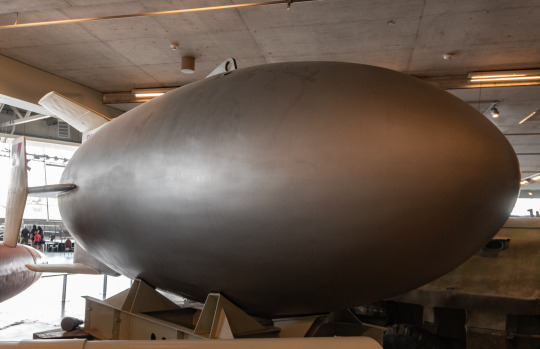#Canadian War Museum
Text
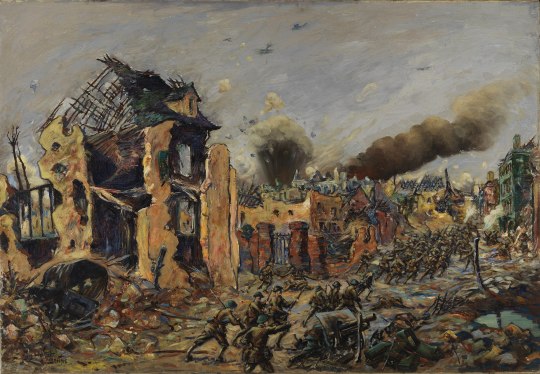
French Canadians Enter Péronne, 1918, Louis Weirter, 1918
#art#art history#Louis Weirter#war art#war artists#history#military history#WWI#World War One#First World War#British art#Scottish art#20th century art#oil on canvas#Canadian War Museum
68 notes
·
View notes
Text

"Deposit Colors In Archives Sunday," Ottawa Citizen. July 25, 1942. Page 18.
----
In a colorful ceremony tomorrow afternoon, the 2nd Canadian Battalion (First Great War) will deposit their colors in the Dominion Archives.
A parade will leave the Drill Hall at three o'clock, proceeding by way of the Driveway. Connaught Place and Sussex street to the Archives.
The band of the Governor General's Foot Guards, leading the parade, will be followed by the 2nd Battalion veterans, the First Battalion of the 21st Canadian Armored Regiment (G.G.F.G.) of Debert, N.S., led by Captain W. B. Bowker of Ottawa, and the reserve battalion of the Governor General's Foot Guards and the Peterboro Rangers.
Col. W. B. Megloughlin will be in command. Following the unveiling of the colors at the Archives, Dr. Gustave Lanctot. Dominion archivist, will accept them for safe keeping in the military museum.
The battalion colors were presented to the 2nd Battalion by Charles W. Band, and the King's color by the late King George V. Leaving the Archives, the order of the parade will be reversed so that the active army unit will lead.
Defence Minister Ralston, Mayor Stanley Lewis and other prominent men are expected to attend.
#ottawa#library and archives canada#canadian war museum#regimental colours#2nd canadian battalion#governor general's foot guards#w. b. megloughlin#king's colours#military ceremony#canada during world war 2#canadian military
1 note
·
View note
Photo
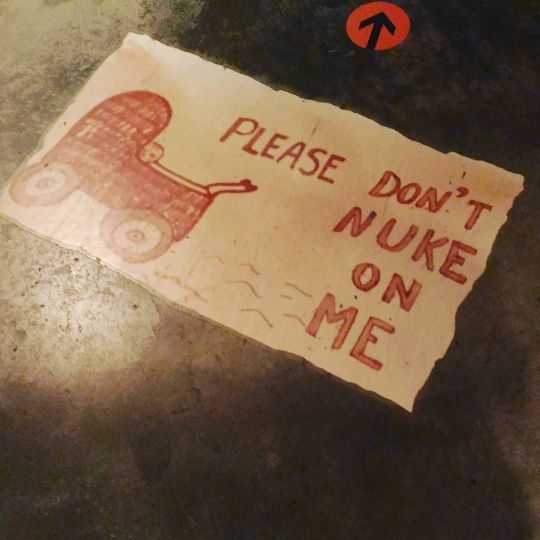
Canadian war museum, ottawa.
4 notes
·
View notes
Photo
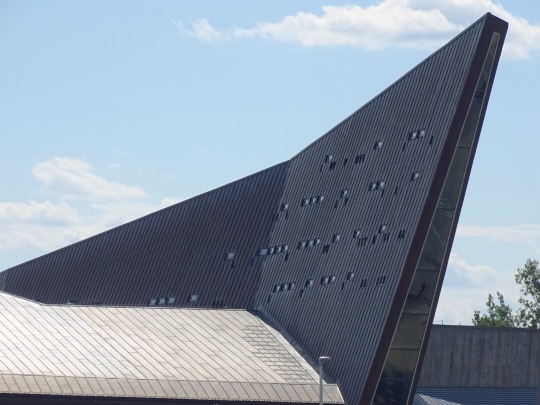
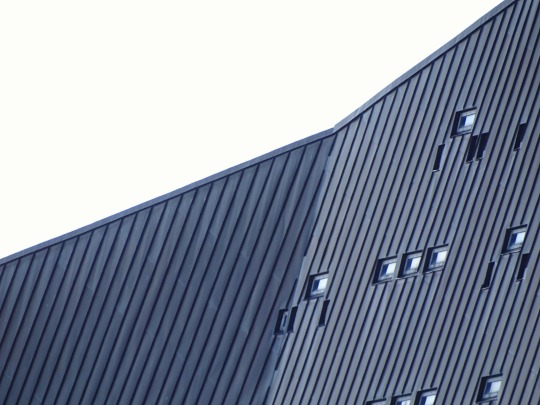



The new Canadian War Museum opened, in commemoration of the 60th anniversary of V-E Day, on May 8, 2005.
#Canadian War Museum#opened#8 May 2005#anniversary#Canadian history#architecture#Ottawa#Ottawa River#Gatineau#Ontario#Québec#travel#Canada#summer 2018#original photography#exterior#Raymond Moriyama#1 Vimy Place#tourist attraction#landmark#roof#Musée canadien de la guerre#CWM
3 notes
·
View notes
Text

Visited the Canadian War Museum's War Games special exhibition on Friday and had a good time. Recommend it for anyone interested in the history of tabletop gaming. Took some photos, and while I wasn't entirely happy with the results, I hope you enjoy them anyways:
War Games
#War Games#War Games CWM#Tabletop Games#Gaming History#History of Games#Military History#Canadian War Museum#CWM#Ottawa
0 notes
Text
One of my favourite Canada facts is that our War Museum (insane thing to exist, btw) portrays Canada as a willing participant in the war on terror dating back to the 1800s. Of course, it doesn’t go into detail about which terrorists it was fighting back then and what they wanted. Which is hilarious because the ‘terrorists’ in question were the Fenians, who were supported Irish liberation in the wake of *checks notes* oh right, the genocidal starvation that the British Crown enabled in Ireland. I’m not sure what’s worse: Canada’s long history of violently opposing justifiable anti-colonial violence in the wake of genocide OR that this history is used to justify contemporary violence at home AND abroad in the name of ending the nebulous threat of ‘terrorism.’ Stupid country. Stupid stupid country.
#claire thoughts#canadian history#yes i’m aware that canada also did some genocide#but that doesn’t really get brought up in the war museum#I can’t even remember if there was an exhibit on the Metis rebellions when I went last time#if there was#it wasn’t memorable#god canada hates indigenous people so fucking much#tw genocide
3 notes
·
View notes
Text
Exploring the Timeless Treasures of Canadian History at These Museums
Canada is a country steeped in rich history, and exploring its past is an enchanting journey that can be experienced firsthand through its historical museums. Whether you find yourself in Ontario, British Columbia, or the bustling metropolis of Vancouver, there are treasures waiting to be discovered at every turn. These museums offer a fascinating glimpse into Canada's captivating past, showcasing artifacts, exhibits, and stories that have stood the test of time. So, prepare to immerse yourself in the timeless wonders of Canadian history as we embark on a journey of exploration through some of the country's most renowned historical museums.
Historical Museums in Canada
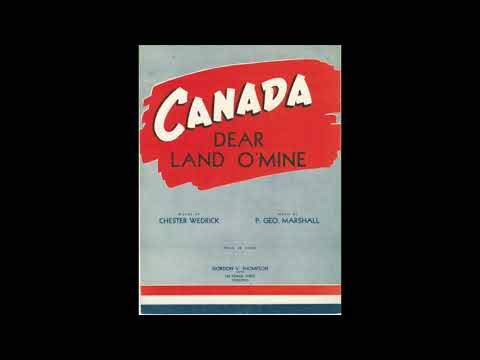
Canada is home to a wealth of historical museums that offer visitors an opportunity to step back in time and explore the rich heritage of this diverse nation. From the vibrant city of Vancouver to the bustling province of Ontario, these museums showcase a wide range of captivating exhibits and artifacts that bring Canada's past to life.
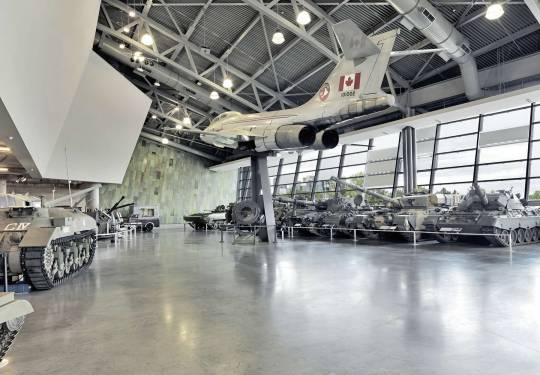
In Ontario, history enthusiasts will find a multitude of historical museums to satisfy their curiosity. The Royal Ontario Museum, located in Toronto, is a must-visit destination for those seeking a comprehensive understanding of Canadian history. With collections spanning from ancient civilizations to contemporary cultures, this museum offers a fascinating glimpse into the evolution of our society.
Meanwhile, in British Columbia, the Museum of Anthropology in Vancouver provides a unique perspective on the cultural heritage of Canada's indigenous peoples. Its extensive collection of art and artifacts showcases the rich traditions and stories of First Nations communities, offering visitors a profound appreciation for the diversity and resilience of these cultures.
Furthermore, historical museums in Vancouver are not to be missed. Among them, the Vancouver Maritime Museum stands out as a captivating tribute to Canada's maritime history. With exhibits featuring intricate ship models, historic photographs, and fascinating tales of exploration, this museum allows visitors to delve into the adventurous spirit that has shaped Canada's coastal communities.
These are just a few examples of the remarkable historical museums that Canada has to offer. Whether you're interested in ancient civilizations, First Nations cultures, or the exploration of the vast Canadian landscape, these museums are sure to provide a captivating journey through the country's past.
Historical Museums in Ontario
Royal Ontario Museum (ROM)
The Royal Ontario Museum, located in the heart of Toronto, is a must-visit for history enthusiasts. With its vast collection of over six million artifacts, the ROM offers a journey through time, showcasing the rich and diverse history of Ontario and beyond. From stunning Egyptian mummies to captivating dinosaur skeletons, this museum has something to offer for everyone.
Canadian War Museum
Situated in Canada's capital city, Ottawa, the Canadian War Museum is dedicated to preserving the memory and stories of Canada's military history. It features an extensive collection of artifacts, including vehicles, weapons, and personal belongings that tell the tales of the country's involvement in various conflicts. The museum also houses interactive exhibits that allow visitors to gain a deeper understanding of the sacrifices made by Canadians in times of war.
Fort William Historical Park
Nestled in Thunder Bay, Fort William Historical Park provides a unique glimpse into the fur trade era of Canadian history. This living history site immerses visitors in an authentic recreation of a fur trade post from the early 19th century. With over 40 reconstructed historic buildings, costumed interpreters, and engaging demonstrations, visitors can experience firsthand the daily life and challenges faced by fur traders during this significant period in Canadian history.
Please note that there are numerous other historical museums in Ontario worth exploring, each offering a distinct perspective on the province's fascinating past.
Historical Museums in Vancouver
Vancouver, the bustling coastal city in British Columbia, is home to a remarkable array of historical museums. These museums offer a glimpse into the rich history of the city and its surrounding regions. Let's explore some of the noteworthy historical museums in Vancouver.
The Museum of Vancouver is a must-visit for history enthusiasts. Located in beautiful Vanier Park, this museum showcases the fascinating history of Vancouver and its people. From indigenous cultures to the modern-day city, the Museum of Vancouver presents a comprehensive narrative through interactive exhibits and thought-provoking displays.
Another prominent historical museum in Vancouver is the Vancouver Maritime Museum. Situated near the picturesque Kitsilano Beach, this museum is dedicated to showcasing the maritime history and heritage of the region. Visitors can delve into the captivating stories of seafarers, explore intricate ship models, and even step aboard a replica of the historic St. Roch ship.
For those seeking a deeper understanding of First Nations history, the Museum of Anthropology at the University of British Columbia is a must-see. Situated amidst the stunning UBC campus, this museum houses an extensive collection of Indigenous art, artifacts, and cultural objects. Through its exhibits, the Museum of Anthropology sheds light on the diverse cultural traditions and histories of Indigenous peoples in British Columbia.
#dear canada#war museum history#canadian art#ontario festival#ontario summer festival#alberta#ontario#midland
2 notes
·
View notes
Text
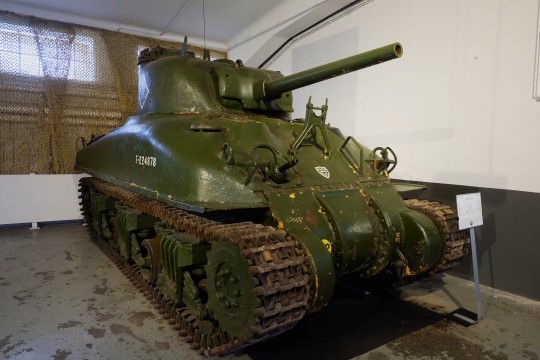
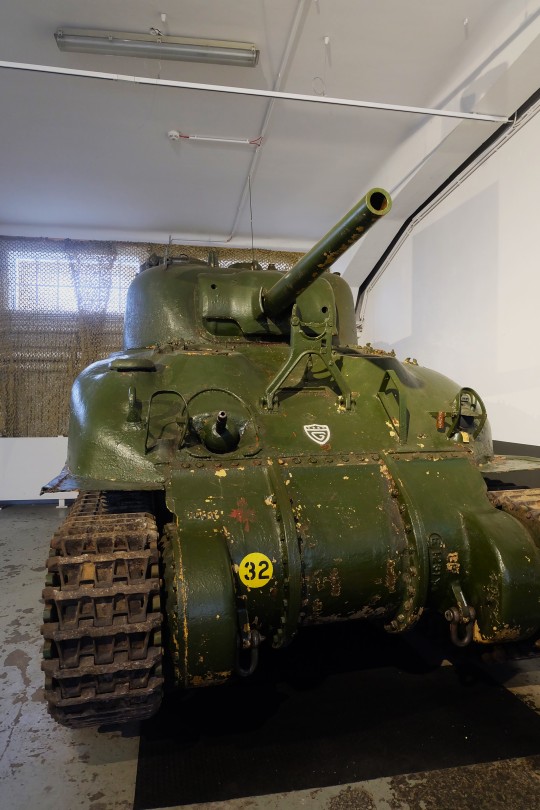
M4AT Sherman "Grizzly" Medium Tank from the Montreal Locomative Works, Canada dated to 1943 on display at the Panzerhalle Museum in Vienna, Austria
This variant of the M4AT tank was produced in Canada under hte official designation "Tank, Canadian, Cruiser, Mark 1" but was nicknamed "Grizzly" Only 188 units of the tank were ever built and he production was stopped in 1943 as soon as enough Sherman tanks were available from the USA. Grizzlies were used by the Canadian Army during the Second World War and in the late 1940's, all surviving British vehicles were sold to Portugal. This tank was bought by the British Army in the 1990's and is in Vienna on loan from the Tank Museum in Bovington, England.
Photographs taken by myself 2022
#military history#canada#canadian#20th century#second world war#panzerhalle museum#vienna#barbucomedie
0 notes
Text
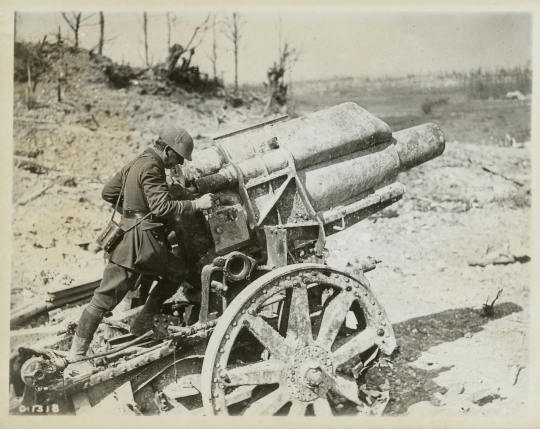
In this photograph from April 1917, a Canadian officer inspects a recently captured German gun. Many of these pieces were proudly displayed in museums and parks across Canada after the war, although hundreds were melted down in scrap metal drives during the Second World War.
#historical photos#world war 1#the first world war#wwi#1917#canadian history#the great war#history#world war one#ww1
76 notes
·
View notes
Text
Books about colonialism now that The Queen is dead:
Colonialism is, unsurprisingly, A BIG FUCKING SUBJECT, and any reading list is going to fall short. (if you want to get versed in anti-colonial theory, here’s a really good beginners list). Because of all this, I’m staying focused on British imperialism, and specifically, events that happened within The Queen’s lifetime.
Legacy of Violence: A History of the British Empire by Caroline Elkins
Ghosts of the Empire: Britain’s Legacies in the Modern World by Kwasi Kwarteng
The Blood Never Dried: A People's History of the British Empire by John Neswinger
Ornamentalism: How the British Saw Their Empire by David Cannadine
The Decline and Fall of the British Empire by Piers Brendan
Insurgent Empire: Anticolonial Resistance and British Dissent by Priyamvada Gopal
Empireland: How Imperialism has Shaped Modern Britain by Sathnam Sanghera.
The Brutish Museums: The Benin Bronzes, Colonial Violence, and Cultural Restitution by Dan Hicks
Rhodes Must Fall: The Struggle to Decolonize the Racist Heart of Empire by Brian Kwoba, Roseanne Chantiluke, and Anthinangamso Nkopo
Neo-Colonialism: The Last Stage of Imperialism by Kwame Nkrumah
Kohinoor: The Story of the World’s Most Infamous Diamond by William Dalrymple and Anita Anand
Mountbatten: Apprentice Warlord by Adrian Smith
The Great Partition: The Making of India and Pakistan by Yasmin Khan
Midnight’s Furies: The Deadly Legacy of India’s Partition by Nisid Hajari
Partition, podcast by Neha Aziz
Aboriginal Australians: A History Since 1788 by Richard Broome
Ka Whawhai Tonu Matou: Struggle Without End by by Ranginui Walker
The Hundred Years’ War on Palestine: A History of Settler Colonialism and Resistance by Rashid Khalidi
Nasser: The Last Arab by Saïd K. Aburish
The Cyprus Emergency: The Divided Island 1955-1974 by Nicholas van der Bijl
Histories of the Hanged: The Dirty War in Kenya and The End of Empire by David Anderson
Imperial Reckoning: The Untold Story of Britain’s Gulag in Kenya by Caroline Elkins
Rhodesia: A Complete History, 1890-1980 by Peter Baxter
Massacre in Malaya: Exposing Britain’s My Lai by Christopher Hale
Kill the Indian, Save the Man: The Genocidal Impact of American Indian Residential Schools by Ward Churchill
A National Crime: The Canadian Government and The Residential School System from 1879 to 1996 by John S. Milloy
Missing and Murdered: Finding Cleo, podcast by Connie Walker
The Troubles: Ireland’s Ordeal and the Search for Peace by Tim Pat Coogan
Making Sense of The Troubles: The Story of Conflict in Northern Ireland by David McKittrick and David McVea
Say Nothing: A True Story of Murder and Memory in Northern Ireland by Patrick Radden Keefe
There Was A Country: A Personal History of Biafra by Chinua Achebe
The Untold Story of the Nigeria-Biafra War by Luke Nnaemeka Ameke
598 notes
·
View notes
Text
Thomas Fountain Blue

Thomas Fountain Blue, the first African American to head a public library in the United States, was also a civic, educational, and religious leader. Blue was born in Farmville, Virginia, on March 6, 1866, to Noah Blue, a carpenter, and Henry Ann Crawley Blue. They were parents of two other children, Alice Blue and Charles Blue.
Blue enrolled in Hampton Institute in Hampton, Virginia, in 1885 and graduated in 1888. In 1894, he enrolled in Richmond Theological Seminary (now Virginia Union University) in Richmond, Virginia, finishing in 1898 with a Bachelor of Divinity degree. One week later, when the United States declared war on Spain after the sinking of the USS Maine off the coast of Cuba, touching off the Spanish-American War, Blue joined the Sixth Virginia Volunteers battalion comprising African American soldiers and was stationed first in Camp Poland in Tennessee and later at Camp Haskell in Georgia.
In 1905, Blue was selected to lead the Western Branch Library of the Louisville Free Public Library on South 10th and Chestnut Street, the first Carnegie Library in the nation to serve African American patrons with an exclusively African American staff. The facility cost $31,024.31 to build and when completed had over 4,000 books and 53 periodicals.
In 1914, Blue opened Louisville’s second Carnegie Library for African Americans, the Eastern Branch Library. During World War I, Blue was drafted, left the branch, and was appointed the Education Secretary at Camp Zachary Taylor in Louisville, one of sixteen national Army training camps created across the nation. Blue worked with Black troops who mostly had supporting and laboring roles in the United States.
After the war ended in 1918, Blue returned to Louisville, and a year later, in 1919, he was named head of the “Colored Department” for the city’s public library system and supervised eight African American assistants. The Colored Department was the first in the United States to have a staff which served multiple Black library branches.
In 1922, Blue was a presenter at the American Library Association Conference in Detroit, Michigan, where he gave a paper titled, “Training Class at the Western Colored Branch,” and led the subsequent discussion with the Negro Roundtable composed of other African American Library staffers from across the nation.
On June 18, 1925, Blue married Cornelia Phillips Johnson from Columbia, Tennessee, and they parented two children, Thomas Fountain Blue, Jr., and Charles Blue (named after his younger brother). Two years later, in 1927, Blue founded the Negro Library Conference and conducted its first meeting at Hampton Institute.
Later becoming a minister, Reverend Thomas Fountain Blue—who held membership in the American Library Association, the Special Committee of Colored Ministers of Louisville on Matters Interracial, and was a charter member of the Louisville Chapter of the Association for the Study of Negro Life and History—died on November 10, 1935, in Louisville, Kentucky. He was 69.
At the 2003 joint conference of the American Library Association with the Canadian Library Association Annual Conference at the Metro Toronto Convention Centre in Toronto, Ontario, Blue was posthumously honored when the organization passed a resolution recognizing his leadership in promoting professionalism among the staff of African American libraries across the United States. In 2022, a headstone honoring Blue and his wife, Cornelia Phillips Johnson, was placed at Eastern Cemetery in Louisville by the Frazier History Museum.
https://www.blackpast.org/african-american-history/people-african-american-history/thomas-fountain-blue-1866-1935/
23 notes
·
View notes
Photo

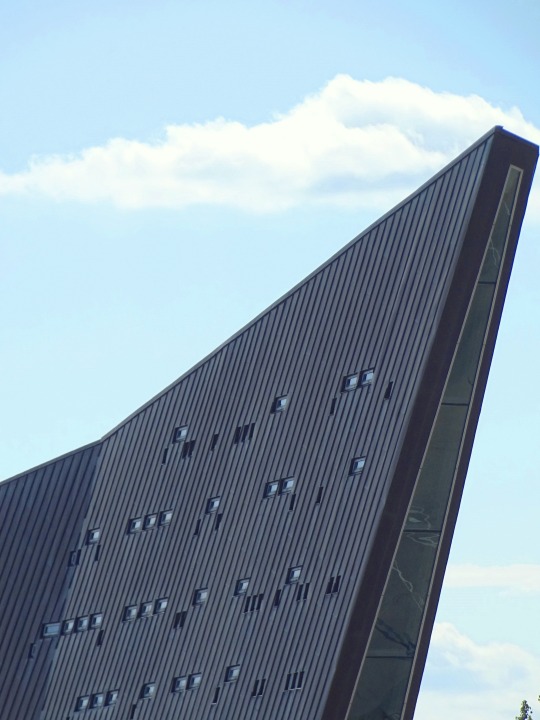

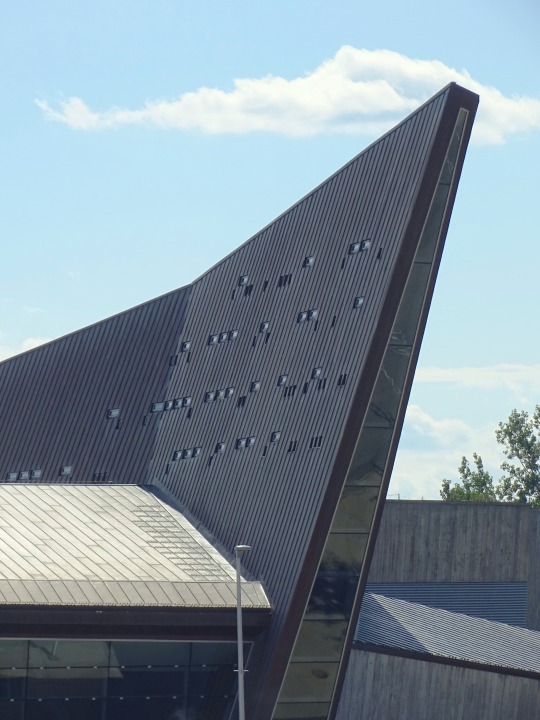

The new Canadian War Museum opened, in commemoration of the 60th anniversary of V-E Day, on May 8, 2005.
#Canadian War Museum#1 Vimy Place#Ottawa#Ottawa River#Gatineau#Raymond Moriyama#roof#architecture#exterior#original photography#travel#vacation#Ontario#Québec#Canada#summer 2018#landmark#tourist attraction#detail#window#opened#8 May 2005#anniversary#Canadian history
0 notes
Text
The Ukrainian Labour Farmer Temple Association (ULFTA) was established in Winnipeg in 1918 as an association of cultural societies and community halls and the Ukrainian Social Democratic Party of Canada (USDPC). By 1928 it had 167 branches across Canada. Labour Temples and other associated halls existed in cities like Winnipeg, Edmonton, and Toronto (1921),[1] as well as in rural communities in the Ukrainian Block Settlements.
As no form of public medicare was available at the time, ULFTA founded the Workers Benevolent Association (WBA) in Winnipeg in 1922, with branches and membership rapidly spreading throughout Canada; it even extended its membership to all workers, irrespective of ethnic origin.
In 1940, the ULFTA was banned under the wartime Defence of Canada Regulations, and a few of its leaders and journalists were interned. Several Labour Temples were confiscated by the federal government as "enemy property" with several being sold off.[2]
In 1940, the ULFTA underwent a name change and became the Association of United Ukrainian Canadians (AUUC).[3]
Few post World War II immigrants joined the AUUC as most were opposed to the Soviet Union and Communism.
However, the AUUC has a legacy of senior's homes, children's camps, monuments and museums to Ukrainian literary giants, most notably the monument to the Ukrainian poet Lesya Ukrainka, a gift from Soviet Ukraine, on the grounds of the University of Saskatchewan in 1976. In addition, the AUUC still runs programs such as Edmonton's Trembita dance ensemble.
#auuc is still around & has published statements on the war if ur curious#id characterize them as fairly evenhanded#this article also doesnt rly go into any extent abt their relations w soviet ukraine for decades
34 notes
·
View notes
Text

The Unexplained Mystery of Granger
A young man, Granger Taylor was a mechanical genius that was self-taught. He dropped out of school in the eighth grade, however, at the age of only fourteen he built a one-cylinder automobile which is now on display the Duncan Forest Museum along with a steam locomotive that he hauled out of the woods and restored. At age seventeen he overhauled a bulldozer that no one else could repair. He built a replica of a World War II fighter plane that was snatched-up by a collector for $20,000.
Granger always wondered how Flying Saucer were powered. He built his own out of two satellite dishes, one top and one bottom, as an inspiration. His “flying saucer” became a home-away-from-home with couch, TV and a wood stove. He would often sleep in his “space craft”.
He later said he was in contact with extraterrestrials that were going to show him how their technology works. He told everyone he was going for a trip on an alien space ship. Then one night in November of 1980 he disappeared and left a note for his family. To this day, despite an RCMP investigation, he has never been found, nor have they found any possible clues as to his whereabouts.
The Granger Affair is certainly a great Canadian mystery. Surely a man of his obvious mechanical talents would not go unnoticed had he simply slipped away in the night. After a four year investigation authorities haven’t a single lead to where he might be.
The Granger Taylor Flying Saucer rests on stilts in the backyard of the Taylor home at Duncan on Vancouver Island. It is a mute memorial to its builder, young Granger Taylor.
“He built his spaceship out of two satellite receiving dishes and outfitted it with a television, a couch, and a wood-burning stove. He became obsessed with finding out how flying saucers were powered, spending hours sitting in the ship thinking and often sleeping there,” wrote Douglas Curran in his book: In Advance of the Landing: Folk Concepts of Outer Space (1985).
Then one November night in 1980 Granger Taylor simply disappeared.
He left behind a yard strewn with old tractors; machine engines, vintage automobiles, a bulldozer, as well as a note which read:
Dear Mother and Father, I have gone away to walk aboard an alien ship, as recurring dreams assured a 42 month interstellar voyage to explore the vast universe, then return. I am leaving behind all my possessions to you as I will no longer require the use of any. Please use the instructions in my will as a guide to help. Love, Granger.
The forty-two months were up in May 1984 and his parents, Jim and Grace Taylor, leave the back door unlocked in case their son shows up. But he never has.
Granger Taylor left school in the eighth grade and found work as a mechanic’s helper, showing a flair for repairing machinery. At the age of fourteen he built a one-cylinder car which is on display at the Duncan Forest Museum. He constructed a replica of a World War II fighter plane, and he left behind his silver-and-red flying saucer.
He told a friend a month before he disappeared that he was in mental contact with someone from another galaxy and that he was in receipt of an invitation to go on a trip through the Solar System.
“On the night that Granger disappeared, ” wrote Curran, ” a storm struck the central part of Vancouver Island. Hurricane winds were reported and electrical power was knocked out. Granger vanished, along with his blue pick-up truck.
“After four years of ‘exhaustive checks’ of hospital, passport, employment, and vehicle records, the Royal Canadian Mounted Police have not uncovered a single clue as to the whereabouts of Granger Taylor. ‘I can hardly believe Granger’s off in a spaceship, ‘his father said. ‘But if there is a flying object out there, he’s the one to find it.’ ”
#ghost and hauntings#paranormal#ghost and spirits#haunted locations#haunted salem#myhauntedsalem#unsolved mystery#granger taylor
24 notes
·
View notes
Text

Members of the 5th Canadian Mounted Rifles return from combat while piled on a tank, August 1918. Canadian War Museum.
36 notes
·
View notes
